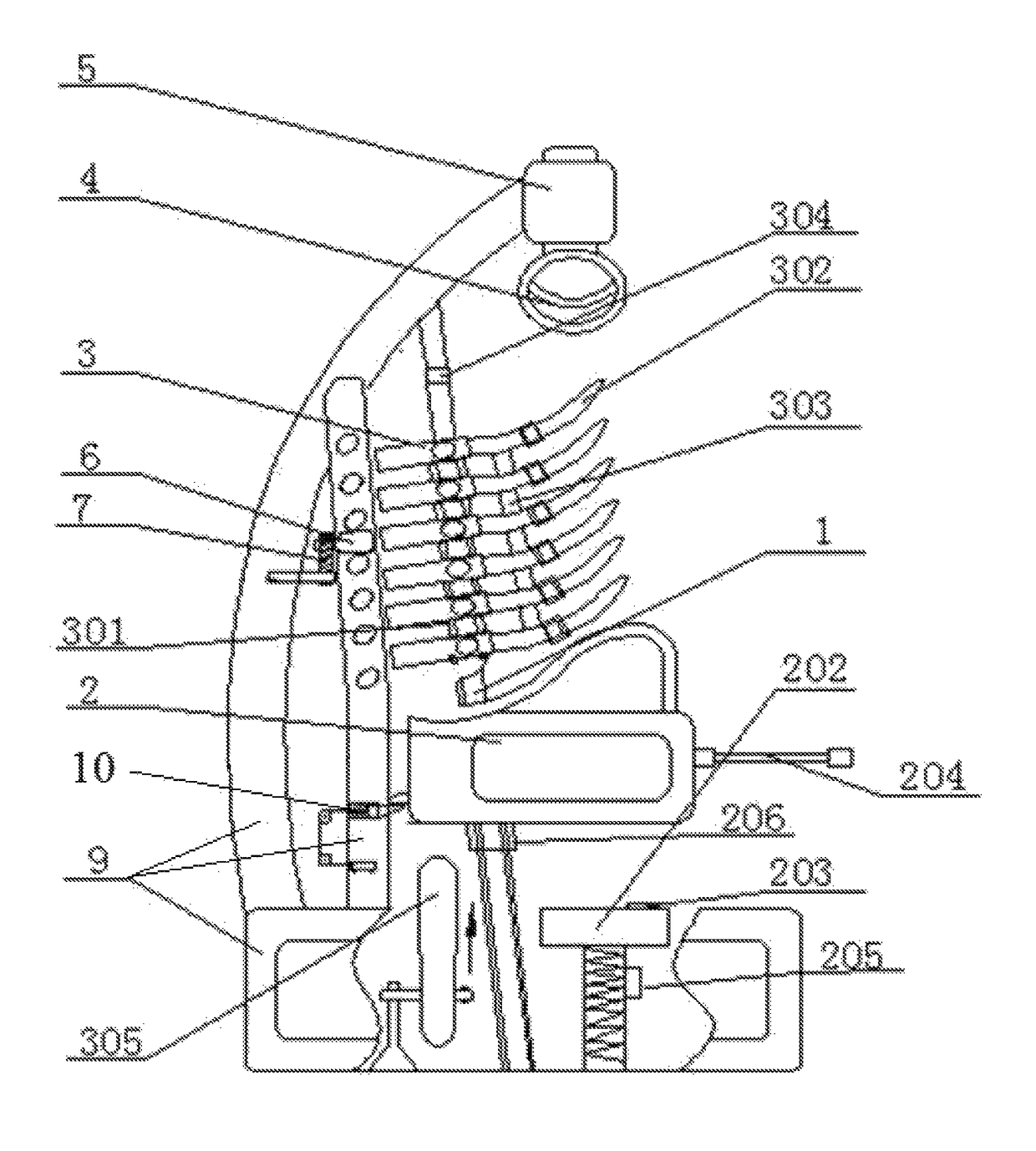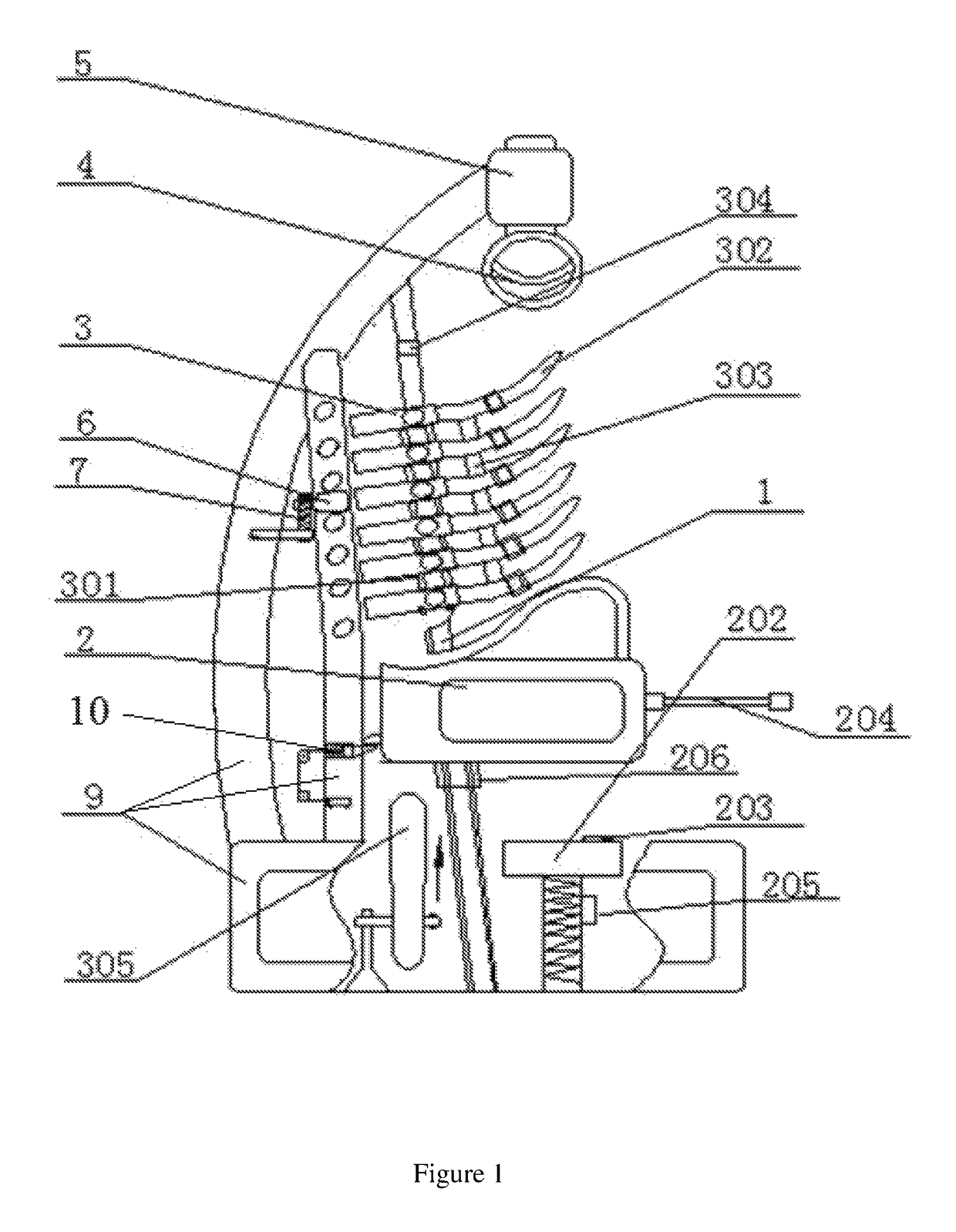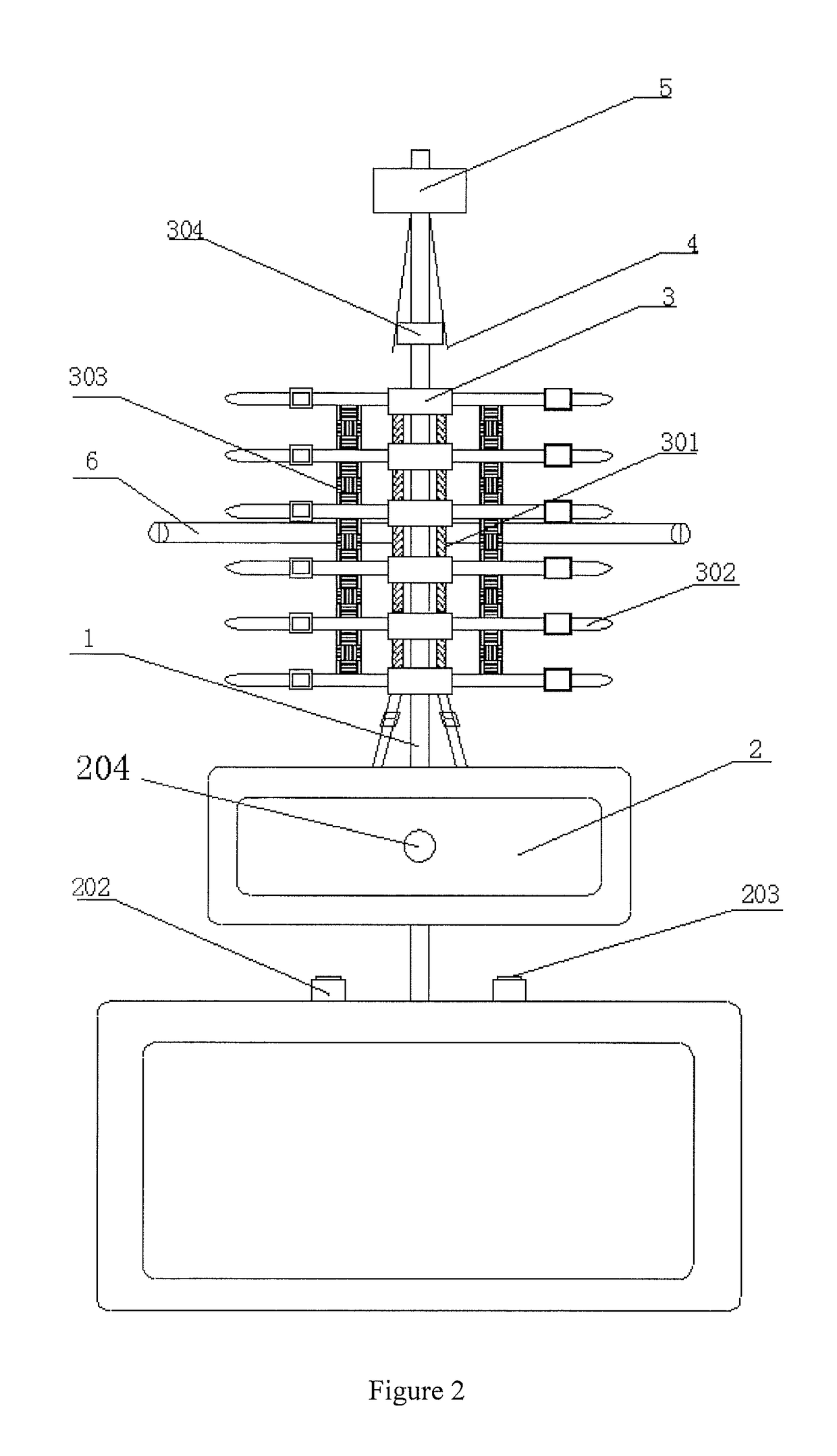Three-dimensional spine correction robot
a robot and spine technology, applied in the field of medical devices, can solve the problems of limited effect of massage and traction treatment, change (unbalance) of three-dimensional directions of intervertebral relative position and injury of intervertebral soft tissue, and serious adverse effects on human health, and achieve short treatment course, good curative effect, and high controllability.
- Summary
- Abstract
- Description
- Claims
- Application Information
AI Technical Summary
Benefits of technology
Problems solved by technology
Method used
Image
Examples
Embodiment Construction
[0020]The technical scheme of the present invention is further described below through the accompanying drawings and the preferred embodiment.
[0021]Referring to FIG. 1 and FIG. 2, the preferred embodiment of the present invention provides a three-dimensional spine correction robot that may cure spinal intervertebral diseases, enhance the function of spine care and improve the comfort level and accuracy of the treatment. The three-dimensional spine correction robot comprises a pillar 1, a seat 2, a plurality of human body fixing belts 302, a head fixing apparatus, a bracket 9, a plurality of pillar casing pipes 3, a spine lateral push-and-pull apparatus 6, an overall casing-pipe retractor device 304 and a seat locking mechanism 10, wherein the head fixing apparatus is fixed on the top of the bracket 9; the pillar casing pipes 3 are sleeved over the pillar 1 in a movable manner, and each pillar casing pipe 3 is connected to a human body fixing belt 302; the lower end of each pillar ca...
PUM
 Login to View More
Login to View More Abstract
Description
Claims
Application Information
 Login to View More
Login to View More - R&D
- Intellectual Property
- Life Sciences
- Materials
- Tech Scout
- Unparalleled Data Quality
- Higher Quality Content
- 60% Fewer Hallucinations
Browse by: Latest US Patents, China's latest patents, Technical Efficacy Thesaurus, Application Domain, Technology Topic, Popular Technical Reports.
© 2025 PatSnap. All rights reserved.Legal|Privacy policy|Modern Slavery Act Transparency Statement|Sitemap|About US| Contact US: help@patsnap.com



